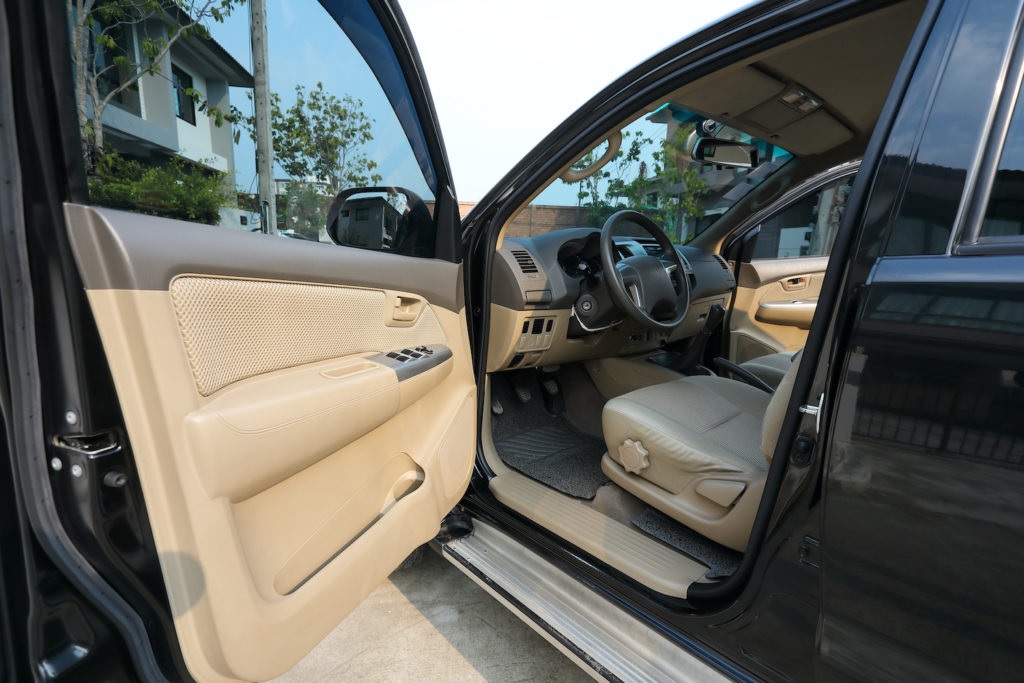Car enthusiasts share a common passion for the sleek and stylish interiors that grace their favorite vehicles. However, amidst the admiration, a question often lingers in the minds of curious minds: “What material are car interior panels made of?” In this extensive exploration, we’ll delve even deeper into the diverse materials that contribute to the creation of the interiors of modern automobiles.
Understanding the Basics
Introduction to Car Interior Panels
Car interior panels are not just aesthetic components; they are integral to the overall design and functionality of a vehicle. These panels serve as protective coverings for the inner workings of a car, ensuring a seamless blend of form and function.
The Importance of Material Selection
The selection of materials for car interior panels goes beyond aesthetics; it significantly influences the overall performance and user experience. Manufacturers carefully weigh factors such as durability, comfort, and visual appeal when choosing materials.
Structural Role of Interior Panels
Beyond aesthetics and protection, interior panels play a structural role in vehicles. They contribute to the overall integrity of the car’s frame, providing support and stability.
Common Materials Used
1. Plastic: Lightweight and Versatile
Plastic remains a staple in the automotive industry due to its remarkable versatility. In the realm of car interior panels, its lightweight nature makes it an attractive choice. From dashboard components to door panels, plastic offers a cost-effective solution without compromising on functionality.
Plastic Types in Car Interiors
Different types of plastics are employed in car interiors, ranging from polypropylene for durability to polyethylene for flexibility.
Advancements in Plastic Technology
Ongoing advancements in plastic technology include the development of reinforced and composite plastics, enhancing both strength and aesthetics.
2. Leather: A Touch of Luxury
For those seeking a touch of luxury, leather interiors are a timeless choice. Leather upholstery exudes sophistication and comfort, making it a preferred option for high-end vehicles. The meticulous tanning and processing of leather contribute to its distinct texture and smell.
Leather Grades and Finishes
Explore the various grades of leather, from full-grain to bonded, and the different finishes that influence the overall look and feel.
Sustainability in Leather Production
The automotive industry is increasingly focusing on sustainable leather production methods, addressing environmental concerns associated with traditional tanning processes.
3. Fabric: Comfort and Customization
Fabric materials provide a comfortable and customizable option for car interiors. They come in an array of textures and colors, allowing for a personalized touch. Fabric panels strike a balance between comfort, affordability, and versatility.
Types of Automotive Fabrics
Explore the different types of fabrics used in car interiors, including nylon, polyester, and microfiber, each offering unique characteristics.
Innovations in Fabric Technology
Advancements in fabric technology include the development of stain-resistant and water-resistant materials, enhancing the practicality of fabric interiors.
4. Wood: Classic Elegance
Wooden accents in car interiors evoke a sense of classic elegance. Used sparingly, wood trim adds warmth and a touch of luxury to the overall design. It is often employed in luxury and vintage vehicles to create a distinguished atmosphere within the cabin.
Wood Veneers and Sustainable Sourcing
Learn about the use of wood veneers and the industry’s efforts toward sustainable wood sourcing to address environmental concerns.
Advanced Materials and Innovations
5. Carbon Fiber: The Future of Automotive Design
In recent years, carbon fiber has emerged as a game-changer in automotive design. Its exceptional strength, combined with a modern aesthetic, positions it as a material of the future. Carbon fiber is commonly used in interior panels, contributing to both performance and visual appeal.
Carbon Fiber in Supercars and Hypercars
Explore how carbon fiber is extensively used in the interiors of high-performance vehicles, contributing to their lightweight construction and aerodynamic efficiency.
Challenges in Carbon Fiber Production
While carbon fiber offers numerous benefits, challenges in production costs and manufacturing processes continue to be addressed by the industry.
6. Alcantara: The Luxury Alternative
Alcantara, a high-end synthetic material, offers a luxurious alternative to traditional options. Known for its suede-like texture, Alcantara provides a premium feel without sacrificing durability. It has found its way into the interiors of many luxury and sports cars.
Advantages of Alcantara
Discover the advantages of Alcantara, including its resistance to stains and fading, making it an appealing choice for discerning car owners.
Applications Beyond Upholstery
Alcantara is not limited to upholstery; it is increasingly used in various interior components, such as steering wheel covers and dashboard trim. (See Also: What is Activex Seating Material in F150? A Comprehensive Guide)
7. Sustainable Materials: Driving Towards Eco-Friendliness
With an increasing emphasis on sustainability, car manufacturers are incorporating eco-friendly materials into interior designs. Recycled plastics, organic fabrics, and other sustainable options reflect a commitment to reducing the environmental impact of vehicle production.
Recycled Materials in Car Interiors
Explore how recycled materials, including recycled plastics and reclaimed fabrics, are making their way into car interiors.
Cradle-to-Cradle Design Philosophy
The adoption of the cradle-to-cradle design philosophy focuses on creating materials that can be recycled or upcycled at the end of their lifecycle, promoting a circular economy.
Factors Influencing Material Choices
8. Cost and Affordability
While luxury materials may be enticing, cost considerations play a significant role in material selection. Car manufacturers strive to balance quality and affordability, ensuring that the chosen materials align with the target market.
Economic Factors and Market Trends
Examine how economic factors and market trends influence the affordability and availability of certain materials in the automotive industry.
Customization Packages and Material Options
Some manufacturers offer customization packages, allowing buyers to choose from a range of materials for their car interiors, based on personal preferences and budget constraints.
9. Durability and Longevity
Durability is a paramount consideration when choosing interior panel materials. The wear and tear experienced in a vehicle’s lifespan demand materials that can withstand constant use while maintaining their integrity. Longevity is key to preserving the appeal of the interior.
Testing and Quality Assurance
Learn about the rigorous testing and quality assurance processes employed by manufacturers to ensure the durability and longevity of interior materials.
Warranties and Extended Coverage
Many car manufacturers offer warranties and extended coverage specifically for interior materials, providing peace of mind to car owners.
Maintenance Tips for Different Materials
10. Cleaning Plastic Interiors
Maintaining plastic interior panels involves regular cleaning to preserve their appearance. Simple cleaning solutions and gentle wipes can remove dust and grime, keeping the panels looking fresh.
Avoiding Harsh Cleaning Agents
Explore tips on using mild cleaning agents to avoid damage to plastic surfaces, ensuring longevity and appearance retention.
UV Protection for Plastics
Learn about the importance of UV protection to prevent plastic interiors from fading and deteriorating over time, especially in sun-exposed areas.
11. Caring for Leather Upholstery
Leather requires specialized care to retain its luster. Conditioners and cleaners tailored for leather upholstery help prevent drying and cracking, ensuring a supple and luxurious feel over time.
Hydration and Moisture Control
Understand the importance of keeping leather hydrated and moisture-free to prevent issues such as cracking and mold growth.
Professional Leather Cleaning Services
For those seeking an extra layer of care, professional leather cleaning services can rejuvenate and extend the life of leather interiors.
12. Fabric and Stain Removal Techniques
Fabric interiors are susceptible to stains, but prompt action and the right cleaning techniques can effectively address these issues. Understanding how to tackle stains ensures that fabric panels remain vibrant and stain-free.
Stain-Specific Cleaning Methods
Explore stain-specific cleaning methods for fabrics, addressing common issues such as ink stains, coffee spills, and pet-related messes.
Fabric Protection Treatments
Consider the benefits of fabric protection treatments, which create a barrier against stains and spills, simplifying the cleaning process.
Future Trends in Car Interior Materials
13. Smart Fabrics and Integrated Technologies
The future of car interiors is poised to integrate smart fabrics and advanced technologies. Imagine interactive panels, adaptive seating materials, and surfaces that respond to touch. These innovations promise to redefine the driving experience. (See Also: How Do Ventilated Seats Work? Exploring the Mechanism Behind Cool Comfort)
Integration with Vehicle Connectivity Systems
Explore how smart fabrics can be seamlessly integrated with vehicle connectivity systems, providing real-time information and enhancing the overall driving experience.
Adaptive Seating for Comfort and Ergonomics
Adaptive seating materials, responsive to the driver’s posture and comfort needs, are expected to become a standard feature in the future of automotive design.
14. Customization Trends: Tailoring Interiors to Individual Tastes
As consumers seek more personalized experiences, customization trends are influencing material choices. From choosing the color of the stitching to selecting unique trims, car owners are increasingly able to tailor interiors to their individual tastes.
Online Configurators and Virtual Showrooms
Explore how online configurators and virtual showrooms allow buyers to visualize and customize their car interiors before making a purchase.
Collaborations with Luxury Brands
Luxury car manufacturers often collaborate with high-end fashion and design brands to offer exclusive interior customization options, adding a touch of exclusivity.
Expert Tips for Choosing and Maintaining Car Interior Panels
As you embark on the journey of selecting and maintaining car interior panels, expert advice can make a significant difference. From choosing the right materials to preserving their pristine condition, these tips ensure a rewarding and enduring experience with your vehicle’s interior.
1. Prioritize Durability When Choosing Materials
When selecting car interior panels, prioritize durability. Opt for materials that can withstand the rigors of daily use, ensuring longevity and a consistently appealing aesthetic.
2. Consider Your Lifestyle and Usage Patterns
Tailor your material choices to your lifestyle. If you have a family or frequently transport pets, opt for materials that are stain-resistant and easy to clean. Understanding your usage patterns helps in choosing materials that align with your needs.
3. Invest in Quality Cleaning Products
Maintaining car interior panels requires the right cleaning products. Invest in quality cleaners and conditioners specifically designed for the materials in your vehicle. This ensures effective cleaning without causing damage.
4. Rotate Your Cleaning Routine
Rotate your cleaning routine to address different materials. Plastic, leather, fabric, and wood each require specific care. Regularly rotate your cleaning routine to ensure all materials receive the attention they need.
5. Utilize UV Protection for Sun-Exposed Areas
Sun exposure can cause fading and deterioration, especially in plastic and leather interiors. Use UV protection products on sun-exposed areas to preserve the color and integrity of your car interior panels.
6. Embrace Sustainable Choices
Consider sustainable materials for your car interior panels. Manufacturers are increasingly incorporating recycled and eco-friendly options. Embracing sustainability not only benefits the environment but also aligns with the industry’s push towards greener practices.
7. Consult Manufacturer Recommendations
Refer to your car manufacturer’s recommendations for cleaning and maintenance. They often provide specific guidelines tailored to the materials used in your vehicle, ensuring optimal care.
8. Test Cleaning Products in Inconspicuous Areas
Before using a new cleaning product, test it in inconspicuous areas to ensure compatibility with your car interior materials. This prevents unexpected reactions or damage to visible areas.
9. Address Stains Promptly
Address stains promptly to prevent long-term damage. Whether it’s a coffee spill on fabric or ink on leather, swift action enhances the chances of successful stain removal.
10. Stay Informed About Industry Trends
Stay informed about industry trends in car interior materials. As technology evolves, new materials and innovations emerge. Keeping abreast of trends allows you to make informed decisions when upgrading or customizing your car interior.
11. Explore Customization Options
Explore customization options offered by manufacturers. Many brands provide customization packages, allowing you to tailor your car interior to your preferences. This not only adds a personal touch but also ensures satisfaction with your vehicle.
12. Engage Professional Cleaning Services Periodically
Engage professional cleaning services periodically for a thorough cleaning of your car interior. Professionals have the expertise and tools to reach inaccessible areas, ensuring a comprehensive and rejuvenating cleaning experience.
13. Avoid Harsh Cleaning Methods
Avoid harsh cleaning methods that can damage interior materials. Gentle cleaning, using appropriate tools and products, preserves the integrity of the materials without causing unnecessary wear.
14. Stay Mindful of Temperature Extremes
Extreme temperatures can affect the condition of car interior panels. In hot climates, use sunshades to minimize heat exposure, and in cold climates, use conditioning products to prevent materials from drying out and cracking. (See Also: Does Jeep Use Real Leather? Unveiling the Truth Behind Jeep’s Leather Upholstery)
15. Regularly Inspect and Maintain Wood Trim
If your vehicle features wood trim, regularly inspect and maintain it. Wood requires unique care to prevent drying and warping. Specialized wood cleaners and conditioners help preserve its classic elegance.
Incorporating these expert tips into your approach to car interior panels ensures a harmonious blend of aesthetics, functionality, and longevity. By understanding the intricacies of different materials and adopting proactive maintenance practices, you can elevate your driving experience and revel in the well-preserved beauty of your car’s interior.
FAQs About Car Interior Panels
Curious about the materials that compose your car’s interior panels? Explore these frequently asked questions to gain insights into the world of automotive interior design.
What materials are commonly used for car interior panels?
Car interior panels can be crafted from a variety of materials, including plastic, leather, fabric, and wood. Each material brings unique characteristics to the overall design and functionality of the vehicle.
How do I choose the right material for my car’s interior panels?
Consider factors such as durability, aesthetic preferences, and lifestyle when choosing materials for your car’s interior panels. Plastic offers versatility, leather exudes luxury, fabric provides comfort, and wood adds a classic touch.
Are there sustainable options for car interior panels?
Yes, car manufacturers are increasingly incorporating sustainable options, such as recycled plastics and organic fabrics, into interior designs. Choosing sustainable materials aligns with eco-friendly practices in the automotive industry.
What are the advantages of carbon fiber in car interiors?
Carbon fiber, known for its strength and modern aesthetic, is used in car interiors to enhance both performance and visual appeal. It contributes to lightweight construction and is often found in high-performance vehicles.
How do I maintain and clean different car interior materials?
Maintenance tips vary for different materials. Use appropriate cleaning products and methods for plastic, leather, fabric, and wood. Promptly address stains, rotate cleaning routines, and follow manufacturer recommendations for optimal care.
Can I customize the materials in my car’s interior?
Many car manufacturers offer customization options, allowing you to choose materials based on personal preferences. Explore customization packages to tailor your car’s interior to your unique style and taste.
Are there professional services for cleaning car interiors?
Yes, professional cleaning services specialize in thorough car interior cleaning. Engaging these services periodically ensures a comprehensive and rejuvenating cleaning experience, reaching inaccessible areas.
How can I protect my car interior panels from UV damage?
UV protection products can be applied to sun-exposed areas to prevent fading and deterioration, especially in plastic and leather interiors. Using sunshades in hot climates also minimizes heat exposure.
What are the considerations for wood trim in car interiors?
Wood trim requires specific care to prevent drying and warping. Regularly inspect and maintain wood trim using specialized wood cleaners and conditioners to preserve its classic elegance.
What trends can I expect in future car interior materials?
Future trends include the integration of smart fabrics and advanced technologies, offering interactive panels and adaptive seating materials. Sustainability will continue to influence material choices, reflecting a commitment to greener automotive practices.
Exploring these FAQs provides valuable insights into the dynamic world of car interior panels, guiding you in making informed decisions about materials, maintenance, and customization options.
Conclusion – The Ever-Evolving Landscape of Car Interior Materials
In conclusion, the materials used in car interiors are as diverse as the preferences of drivers. Whether you prioritize the classic elegance of wood, the luxurious feel of leather, or the futuristic appeal of carbon fiber, the choices are vast. Understanding the intricate details behind “What material are car interior panels made of?” enhances our appreciation for the craftsmanship that goes into creating each vehicle.
In your quest for the perfect car, consider not just the performance and exterior aesthetics but also the materials that shape the interior. Stay informed, explore the options, and make choices that align with your preferences, ensuring a driving experience that is not only stylish but also uniquely yours. The world of car interiors continues to evolve, and as technology advances, we can anticipate even more exciting innovations in the materials that define our driving experience. Embrace the journey, explore the possibilities, and enjoy the ride in a car that reflects your personal style and comfort.



